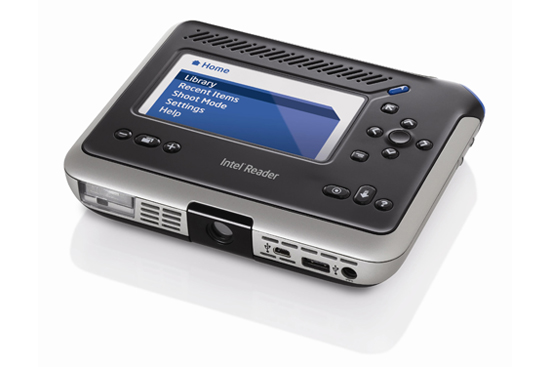What Intel wants in health care


What's going on, he asks? Intel is terrible at consumer products. (Picture from Intel.)
But the Intel Digital Health Group is as serious as a heart attack, and the Intel Reader is part of it. The device is actually a specialized computer, combining a camera, optical character recognition, and a voice chip.
I have a stake in this, because my daughter is dyslexic and my mother blind. I appreciate the hard work that went into this. The $1,500 price tag is off-putting, but Moore's Law tells me that in time it should come down.
And therein hangs our tale.
Intel produces what is now a commodity. It is the dominant supplier of chips but margins are thin. It needs higher margins to thrive.
Health care offers those higher margins. Health care and assistive technologies offer humongous margins because production runs are often small and sales channels thin. Venturebeat says the Intel Reader, for instance, will be going to CTL, Don Johnston, GTSI, Howard Technology Solutions and Human Ware.
None are exactly Best Buy. These are specialty resellers. Johnston, for instance, specializes in technology for dyslexic and autistic kids.
Still, these are growing markets. The Intel Health Guide, for instance, is aimed at the business of aging in place. There are 76 million of us baby boomers and we're not getting any younger -- ka-ching.
And let's look again at the Reader. Products for the blind, for the autistic, and for the dyslexic are traditionally seen as separate markets. Here we have one product that addresses all of them. That means more sales which can drive down costs. In this business that's an innovation.
So there is potential here for the perfect marketing storm. A company that can drive down costs enters a market with enormous margins. It can get fat on slimmer margins than those it finds in the market. As it drives down prices it expands the market -- I might get that Reader for my daughter when it comes in at $400 (and in time it will).
This can truly be a win-win-win. The assistive technology and health care markets want lower prices, which Intel can deliver. Lower prices will expand the reach of things like aging in place technologies and readers for the dyslexic. Intel can build a highly-profitable business that in time delivers top line growth as well as bottom line growth.
Sure, there are specialty channels to figure out. Sure there are new marketing skills here Intel has not yet mastered. But price can cover that up while those skills are learned. This is the lesson Japanese and Chinese producers have been teaching us for decades.
And if they want to offer a review unit, I've got some good testers coming in for Christmas.